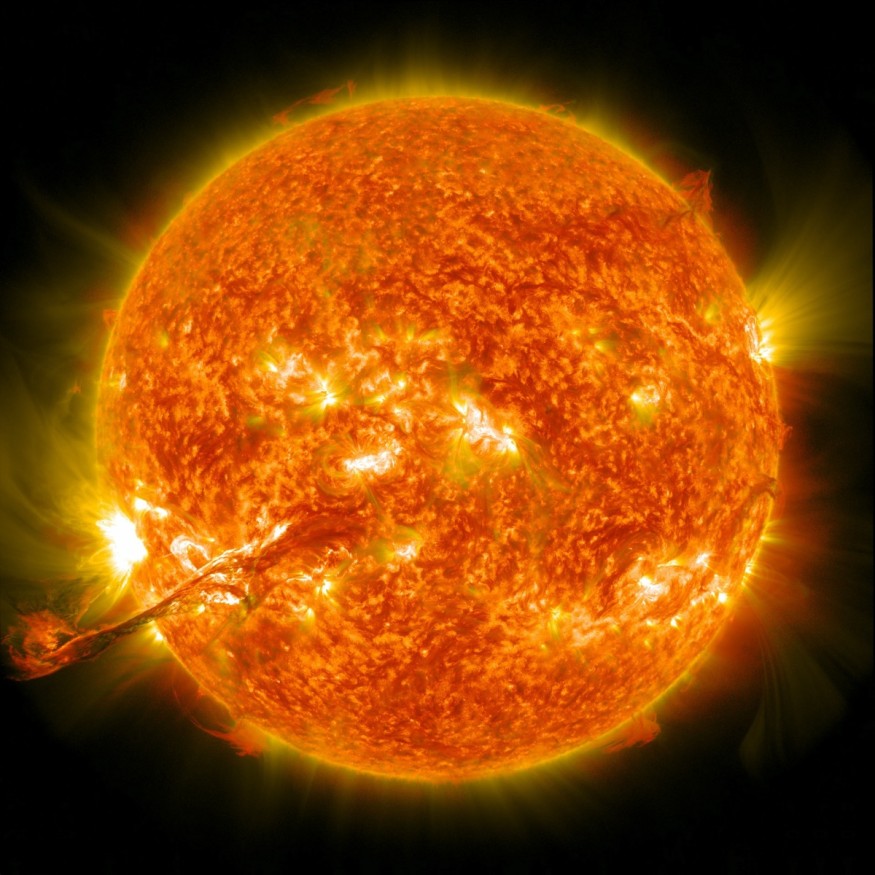Everything seems possible in this world of infinite knowledge. Every day, the world lets humans discover a trick for survival, and solve even the long-standing mysteries, including how the sun could help scientists and astronomers predict weather in space, and save Earth from planet-wide blackouts.
Scientists from Australia and US might have just found a way to predict beforehand potentially dangerous geothermal storms, solar flares and sunspots, by understanding the magnetic dynamo of the sun.

While it is unclear how streams of high-energy particles from the Sun triggers geomagnetic storms, studying its solar flares, sunspots or coronal mass ejections may help us prepare for a possible occurrence of geomagnetic storms to hit Earth.
A new study led by Dr. Geoffrey Vasil from the School of Mathematics & Statistics at the University of Sydney sheds light and provides a strong theoretical framework of how the sun's internal magnetic dynamo helps drive near-Earth space weather.
The 'Convective Conundrum'
The most important part among several distinct regions of the sun is the convection zone, an unstable layer of very hot, turbulent plasma, 200,000-kilometre-deep, taking up the outer 30 percent of the star's diameter.
The National Aeronautics and Space Administration (NASA) can only imagine this region as giant circular convection cells with 'the largest swirls and eddies'. However, this only remains a theory since these cells were never seen, thus they call it the 'Convective Conundrum'.
According to Dr. Vasil, there is an explanation for this. He said that the Sun's rotation has stronger influence than expected, and "breaks up flow into tall spinning cigar-shaped columns 'just' 30,000 kilometres across," instead of the cell being circular, resembling it to spinning a pencil in its point.
"You can balance a skinny pencil on its point if you spin it fast enough," said Dr Vasil, an expert in fluid dynamics. "Skinny cells of solar fluid spinning in the convection zone can behave similarly."
"We don't know very much about the inside of the Sun, but it is hugely important if we want to understand solar weather that can directly impact Earth," he noted. "Strong rotation is known to completely change the properties of magnetic dynamos, of which the Sun is one."
Understanding the Sun's electromagnetic behavior
Dr. Vasil, along with Professor Keith Julien of the University of Colorado and Dr Nicholas Featherstone at Southwest Research Institute in Boulder found that the predicted rapid rotation inside the Sun holds back larger-scale flows, "creating more variegated dynamics for the outer third of the solar depth."
"By properly accounting for rotation, our new model of the Sun fits observed data and could dramatically improve our understanding of the Sun's electromagnetic behavior," said Dr Vasil.
Geomagnetic storms are capable of 'frying' our sophisticated global electronics and communication infrastructure and causing massive blackouts. An occurrence of a huge one today, such as the one that hit Earth in 1859, known as the Carrington Event, "could destroy trillions of dollars' worth of global infrastructure and take months, if not years, to repair," Dr. Vasil said.
"While a solar storm hitting Earth is very unlikely, like an earthquake, it will eventually happen and we need to be prepared."
© 2025 NatureWorldNews.com All rights reserved. Do not reproduce without permission.





